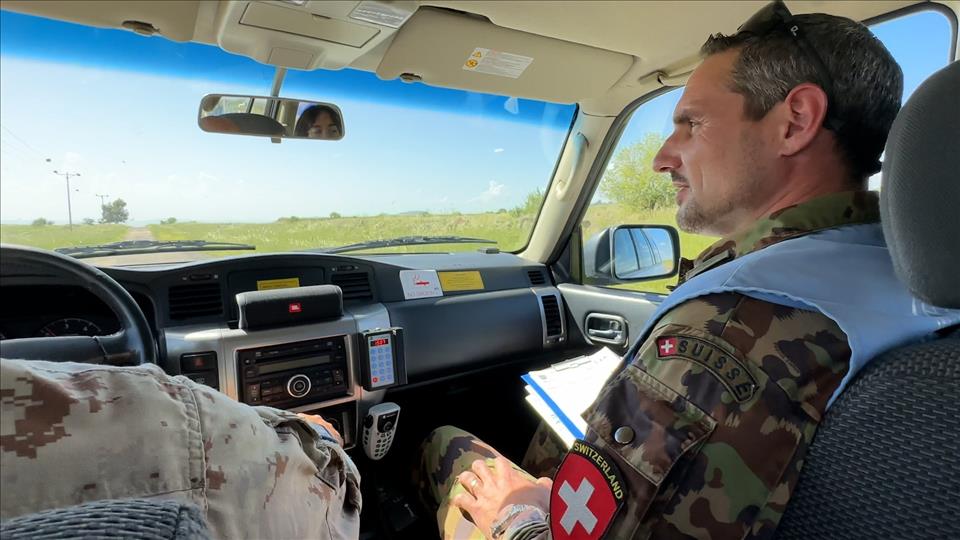
The Hunt For Illegal Weapons
UNTSO military observers in the Middle East monitor ceasefires, supervise armistice agreements, prevent isolated incidents from escalating and assist other UN peacekeeping operations in the region to fulfil their mandates. It's a dangerous job: 18 peacekeepers have have lost their lives in the Middle East.
The Swiss teamWhen Swiss Major General Patrick Gauchat became UNTSO head in 2021, he was the first Swiss to lead a UN peacekeeping mission. He's based at UNTSO head quarters in Jerusalem, along with Swiss Lieutenant Colonel Alex Neukomm, the chief liaison officer to Amman and Tel Aviv. Neukomm meets the Jordanian and Israel authorities and paves the way for the head of mission's visit there.
The other two Swiss officers SWI swissinfo.ch met are Major Livio Räber, team leader of the Observer Group Golan-Tiberias, and Major Roman Gagua, the training officer from the same group in Tiberias. He prepares military observers for their deployment on the Israeli-occupied Golan, explaining what sorts of tanks, warplanes and artillery they should look out for in Golan, where the Israeli Defence Force, IDF, has military bases and frequently carries out training exercises. Across the lines, Syrian troops are stationed in their bases.
What the observers do at GolanIsrael seized the Golan Heights from Syria in the closing stages of the 1967 Six-Day War. An armistice line was established and the region came under Israeli military control. Two UN agencies- UNTSO and the armed Disengagement Observer Force (UNDOF) - continue to supervise the ceasefire.
Operationally, the Alpha Line was drawn in the west, not to be crossed by Israeli Forces, and the Bravo Line in the east, not to be crossed by Syrian Forces. Between these lines lies the Area of Separation, a buffer zone, where observers supervise the number of Syrian and Israeli troops and weapons deployed.
Mine riskGagua drives his car along the main road through the Golan towards Op53, the observation post where Major Livio Räber, one of the team leaders of the Observer Group Golan-Tiberias, is waiting for us. Spring flowers sway gently in the meadows where cows graze and a mother bore runs with her piglets.
It looks like a mountain paradise, but there are hidden dangers. These animals frequently trigger the many landmines that line the route. A rocket fired at Israel from Lebanon in April struck one of these fields. No lives were lost but it was too close for comfort. The military observers have bunkers to take cover when they are caught in the crossfire between different groups that are parties in the conflict.
Op53 is surrounded by barbed wire fences. Just beyond, a landmine is lodged in the ground. Mine disposal experts cannot remove it as blasting it would damage the compound, so the military observers live in constant danger of triggering a large explosion. In this video, Major Livio Räber gives us a tour of this lonely outpost, where cats are kept to kill the snakes and scorpions that abound here.
un praises swiss for peacekeeping effortsexternal link
Legal Disclaimer:
MENAFN provides the information “as is” without warranty of any kind. We do not accept any responsibility or liability for the accuracy, content, images, videos, licenses, completeness, legality, or reliability of the information contained in this article. If you have any complaints or copyright issues related to this article, kindly contact the provider above.






















Comments
No comment